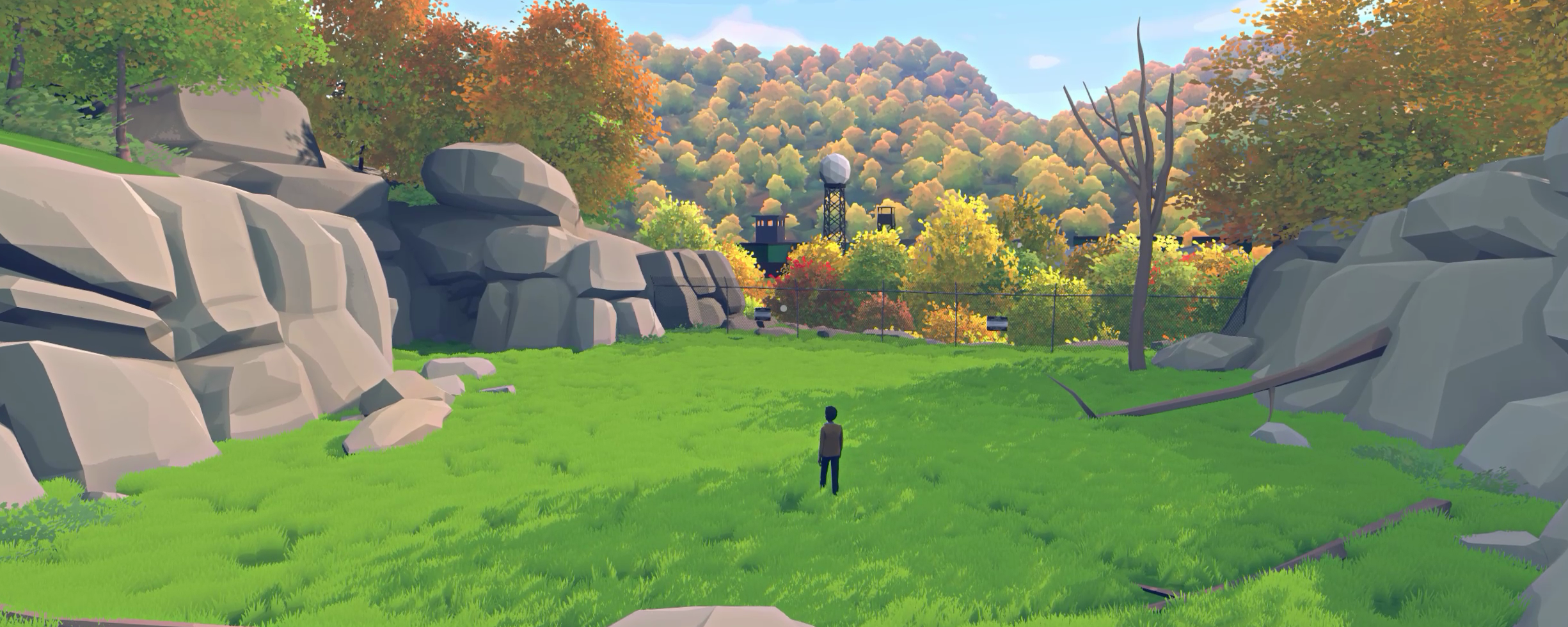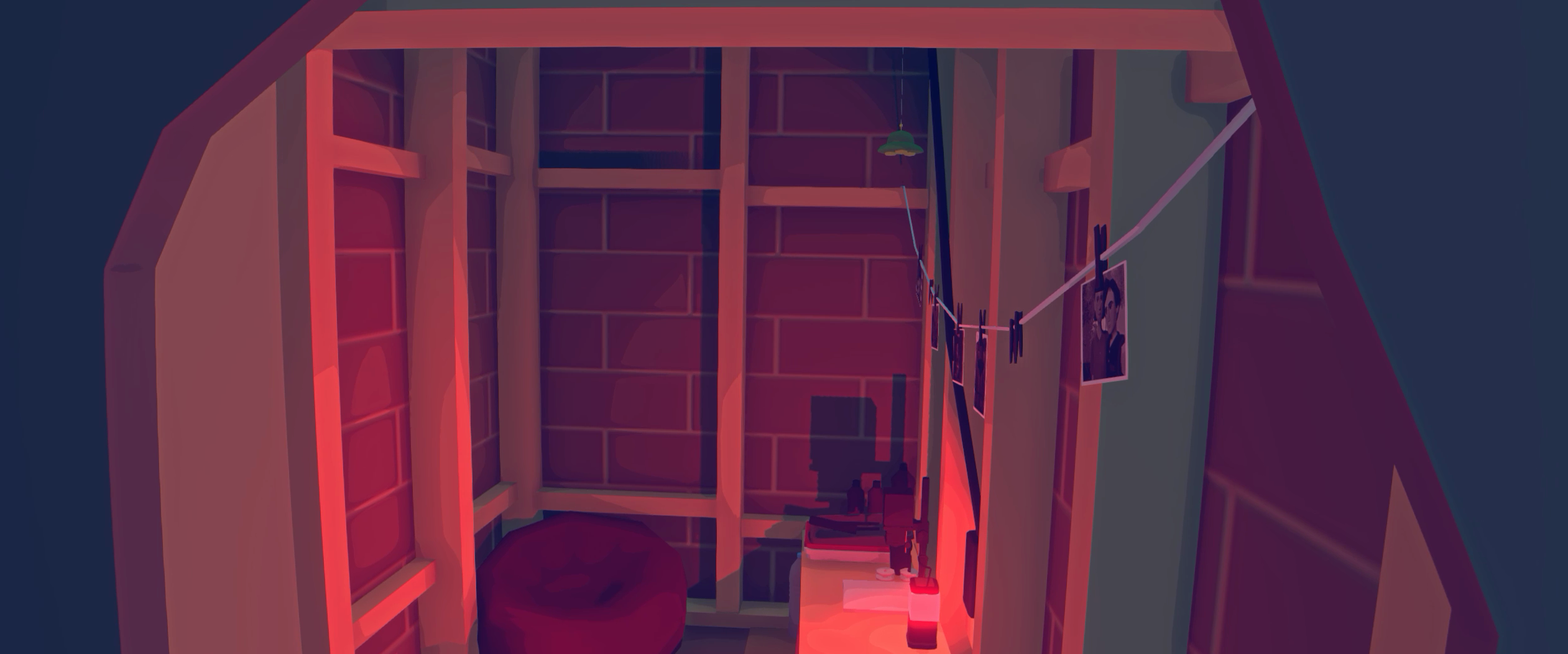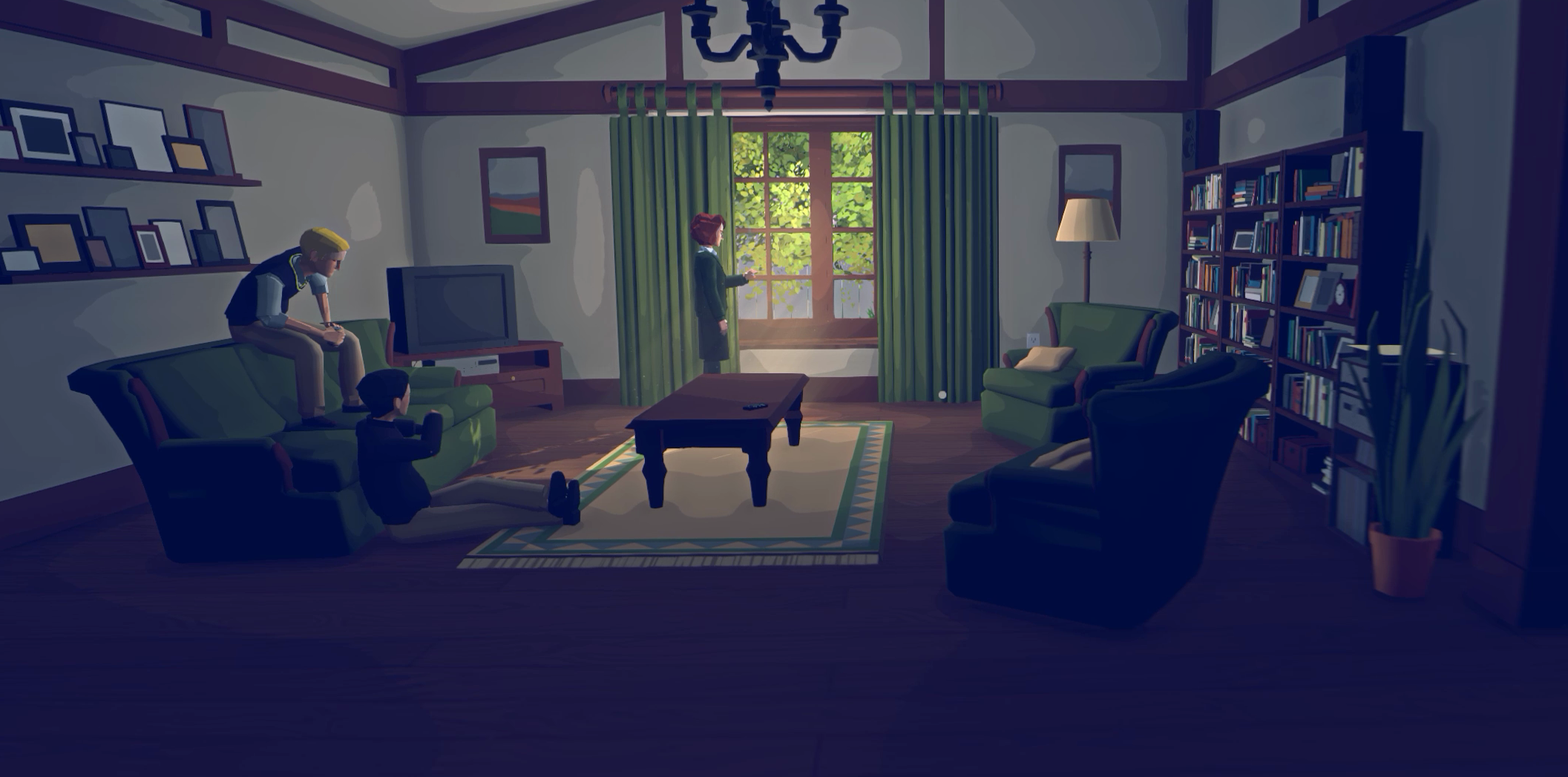Virginia brings the weird mystery and TV pacing of True Detective to games
Case in point: there's a missing person, two strange detectives, and a dream buffalo.

Here’s something: I’ve never seen The X-Files. I mean, I’ve never sat down to watch the series tip to toe, but I feel like I know Mulder and Scully anyway. Sometimes I’ll scroll by a photo of the duo and see Mulder’s slack face and arched brows signifying he’s the goofball while Scully’s intense, wry expression suggests the opposite. Virginia, a first-person mystery game from Variable State, is built around these quiet, implicit principles. In it, you play an FBI agent investigating the strange disappearance of a young boy in '90s rural Virginia with your partner, who's an enigma all her own.
The catch is you’re never in direct control of the storytelling and there’s no dialogue, no voice overs or text—but none of that matters. Virginia may place you in a character’s body, but you really function as its camera, albeit one on an authored path where your control is limited to a small space or limited field of view. It's a scripted, tightly wound narrative that stays on the rails for the better.
In the opening scene, a family grieves and my partner comforts them while I investigate the rest of the house. Through a bit of poking and prodding, I find a secret compartment in the missing boy’s closet. It’s bathed in a red light and photos line the wall. Each highlights a curious location or person—a police officer in one, a forested factory in another—and appear to be taken from a distance. Why the officer? What’s that industrial building? Are they related? And why was this kid looking into it? Without a word, Virginia sets a deep hook. I don’t care that it doesn’t give me complete control. Now, I just want it to tell me a story.
First-person film school
Virginia is happy to oblige, and breaks off from traditional first-person pacing to do so. In the same minute I’m studying the mysterious photos, the next I’m in a car about to plow into the flank of a stoic buffalo. Virginia is pieced together like a film; scenes cut and fade when they’re most potent, chained together to juxtapose important imagery, establish setting, or imply the passing of time. It’s first-person film editing (see: 30 Flights of Loving) with a little wiggle room—a bit jarring at first, but tense and effective.

Within a few minutes, Virginia settles into a hypnotic rhythm, propelling you through a chronological series of vignettes that build out the character of the small town. Of note is a late night hotel research session that slowly warps into an eerie dream sequence. You’re back in the grieving family’s house, but police are dining at the table, jock teens are hanging on the couch titling back beers, and the door at the end of the hallway is lined with a menacing red light. You’re free to walk around the scene and theorize. What’s the significance of the teens in the living room? What does their drinking indicate? Why is a woman smoking a cigarette and staring out the window nearby? Where Virginia doesn’t give you dialogue, it gives you room to observe, but never too much. Before long, the scene transitions and the story continues, my new theories in tow.
After the 20 minute run time of the demo, I felt as curious and confused as the early episodes of True Detective and Twin Peaks left me. Without a peep, I got to know a few primary characters and peek into their emotional baggage. In the span few short scenes I saw the ripples of tragedy spin out in a small rural community. Hell, I had a dream about buffalo—boom, I'm in. But I do wonder how intricate the mystery and its characters can be without dialogue. So far, Virginia does an excellent job communicating emotion through a simple art design that highlights facial expressions, and there are a few epistolary props to dig into—letters, documents, and the like. I’m just not yet convinced it can maintain the same level intrigue as its influences without obscuring detail that can only be communicated through speech. And without it, performances are limited to simple character animations, which may not be enough keep them distinct and memorable.

But the novelty and effectiveness of Virginia's design feels like enough. You can’t linger during a scene in True Detective or choose which way to look in Twin Peaks. There might be a density of vital detail hiding in the margins. It invites the fan-theory analytical attitude of modern television: the urge to watch a scene from every angle and try to beat the detectives to the punch, to find Virginia's Yellow King before the rest.
Then again, in a mystery so ripe and so subtle, the choice between looking left or right might also skip over the truth. It’s a way of watching that demands attention and direct interaction, even if every interaction eventually leads to the same conclusion. Either way, I appreciate Virginia’s soft arrest of my attention and can’t wait to see the mystery through when it releases September 22nd.
The biggest gaming news, reviews and hardware deals
Keep up to date with the most important stories and the best deals, as picked by the PC Gamer team.
James is stuck in an endless loop, playing the Dark Souls games on repeat until Elden Ring and Silksong set him free. He's a truffle pig for indie horror and weird FPS games too, seeking out games that actively hurt to play. Otherwise he's wandering Austin, identifying mushrooms and doodling grackles.


